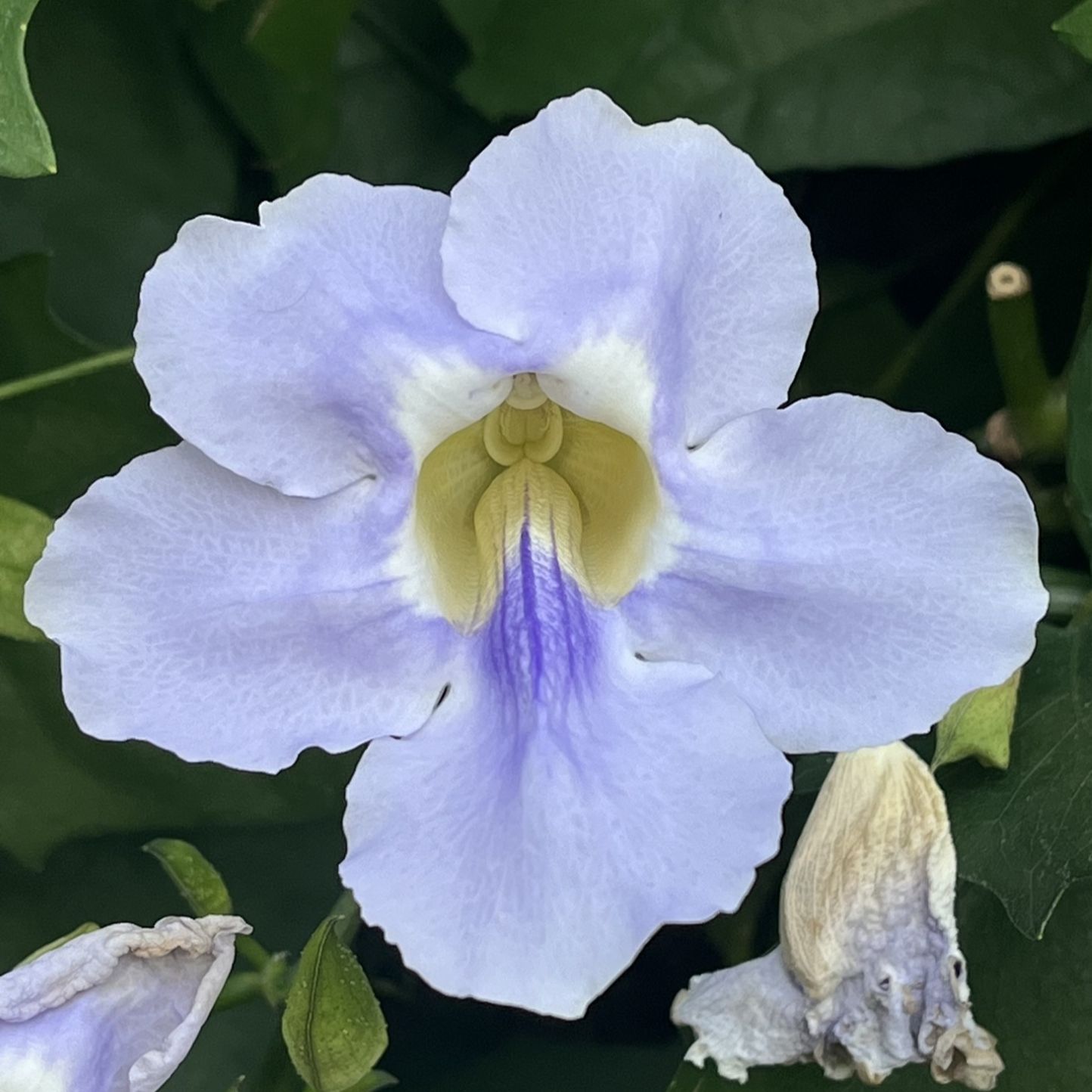ベンガルヤハズカズラは、原産地のインドでは神話に登場する「クリシュナ」のような花。森の中で横笛を吹く、肌が青色の美しい少年です。
The Bengal Clock Vine resembles “Krishna” who appears in the mythology of India, where it originates. He is a beautiful blue-skinned boy who plays the flute in the forest.
【仮名】ベンガルヤハズカズラ
【和名】ベンガル矢筈葛
【英名】Bengal Clock Vine, Sky Vine, Blue Trumpet Vine, Bengal Trumpet, Blue Thunbergia
【学名】Thunbergia grandiflora
【誕生】10/ 28
【開花】01, 02, 03, 04, 05, 06, 07, 08, 09, 10, 11, 12月
【花色】Violet, Blue
ベンガルヤハズカズラ
ベンガルヤハズカズラの概要
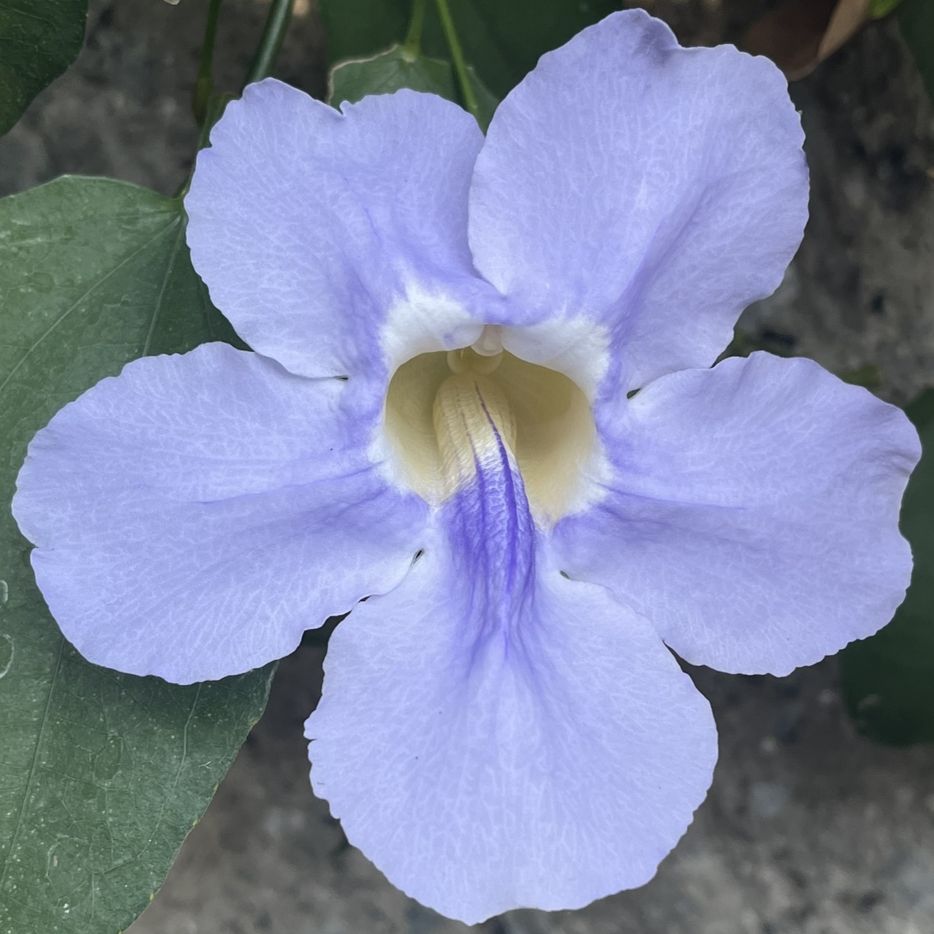
ベンガルヤハズカズラはキツネノマゴ科の蔓性常緑多年草です。原産地はインドで、南アジア~東南アジアに分布。日本へは20世紀に渡来し、温室で一年中、花が咲き続けます。インドでは神話に登場する「クリシュナ」のような花。森の中で横笛を吹く、肌が青色の美しい少年です。
ベンガルヤハズカズラの名前
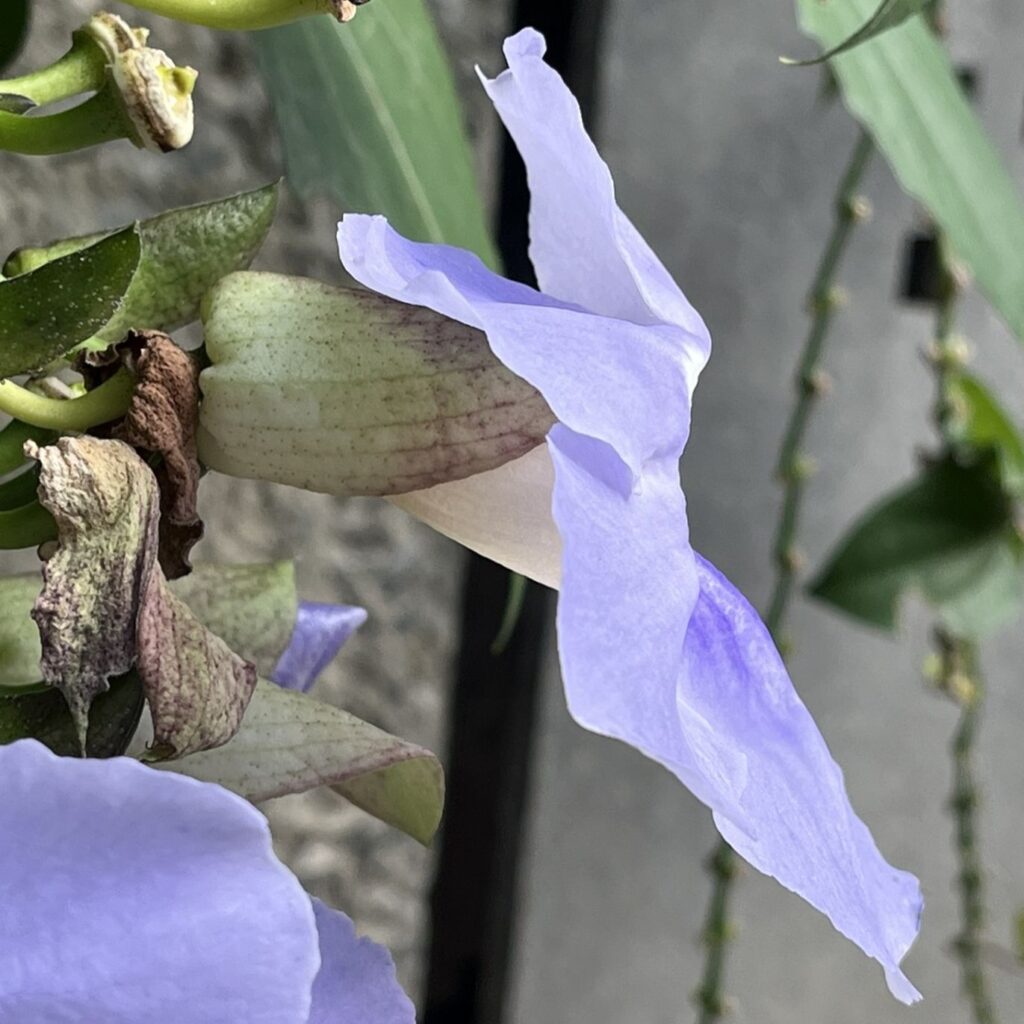
ベンガルヤハズカズラは「ベンガル地方の矢筈葛」という意味で、英名ベンガルクロックバインも同じく「ベンガル地方の矢筈葛」です。ラテン語の属名ツンベルギアはスウェーデンの植物学者カール・ツンベルクへの献名。種小名グランディフロラは「大きな花の」という意味です。
ベンガルヤハズカズラの姿形
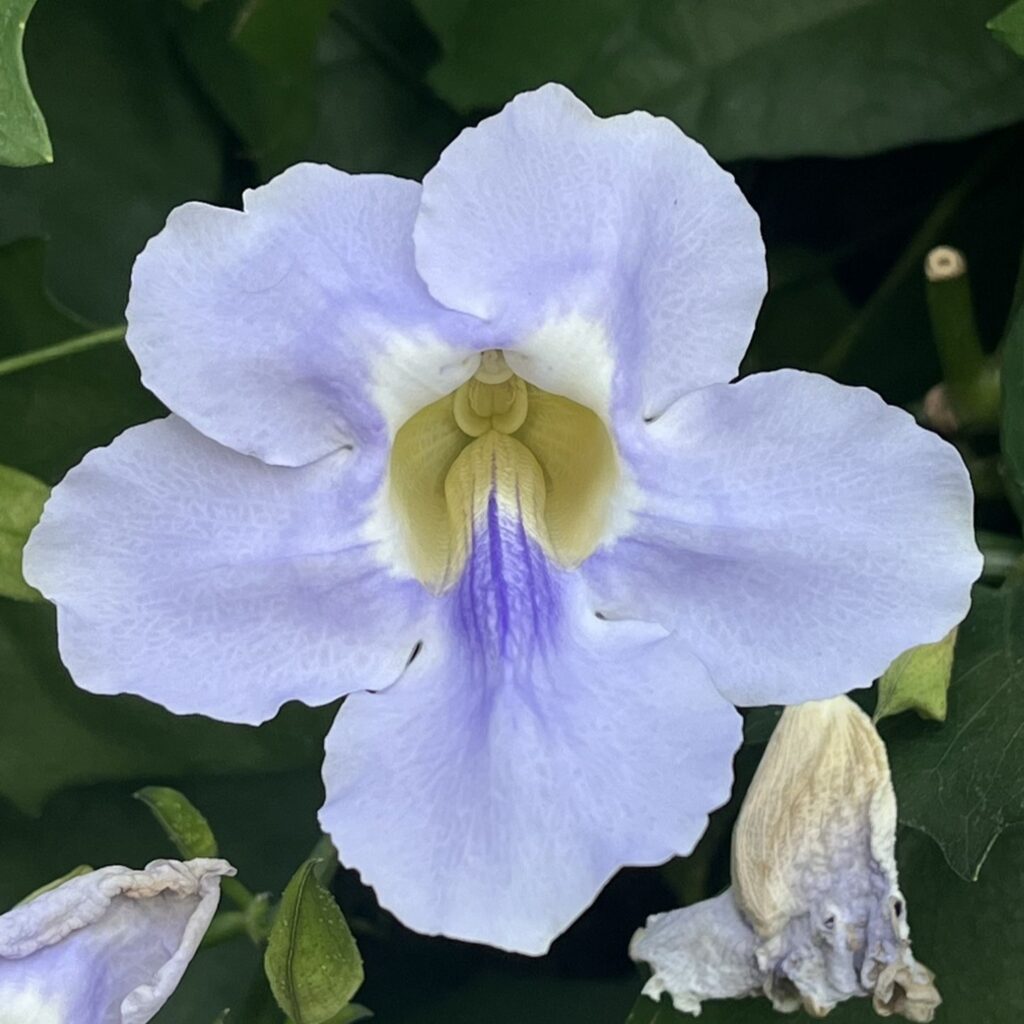
ベンガルヤハズカズラの蔓は長く伸びて木質化。4稜で溝があります。葉は先の尖ったハート形。縁が角張って波打ち、表も裏も白色の細毛が密生します。花は漏斗状で、大きな花被が5裂、目立たない雄しべが4本、雌しべが2裂。房状に垂れ下がって咲き、花後は蒴果を結びます。
ベンガルヤハズカズラの近縁
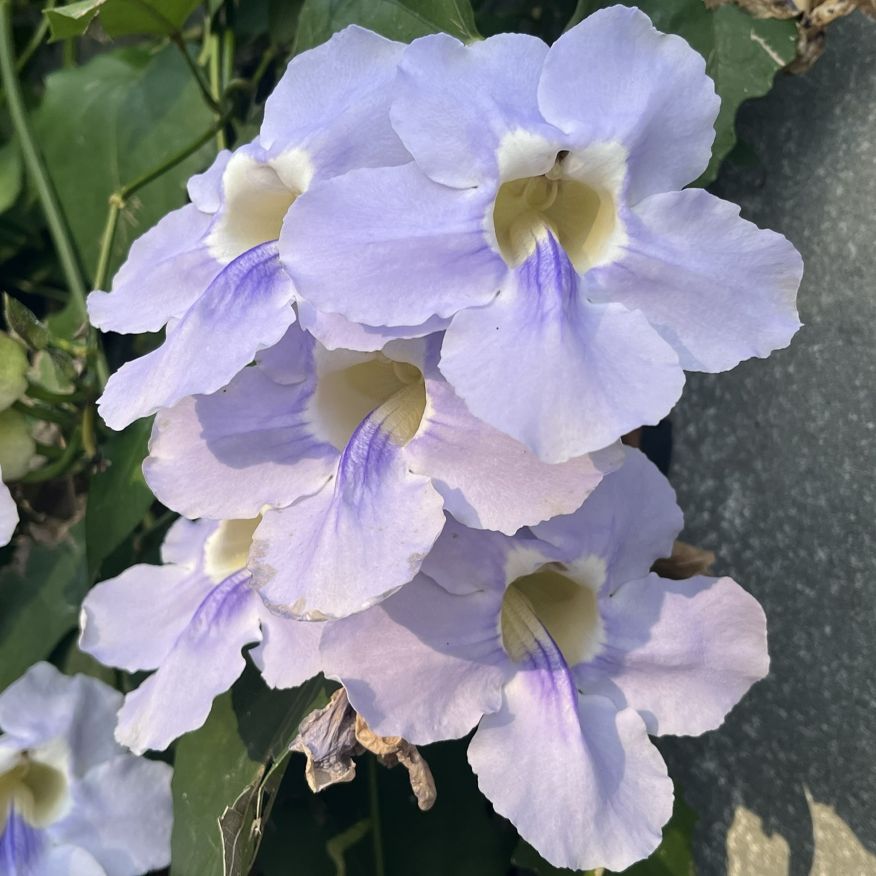
ベンガルヤハズカズラの近縁種「エレクタ」は花被が白色~青紫色、真ん中の喉が吸い込まれるような黄色。立性なので「木立矢筈葛」という和名があります。「アラータ」は葉がハート形、花被が白色~黄色。真ん中の喉が暗紫色なので「黒い瞳のスーザン」という英名があります。
Bengal Clock Vine
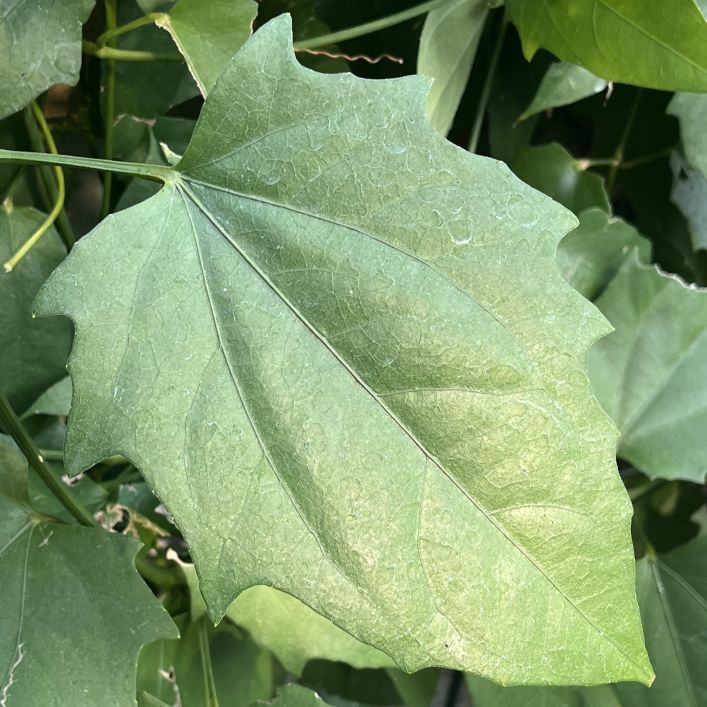
The Bengal Clock Vine is a vine-like evergreen perennial plant of the Acanthaceae family. It is native to India and is distributed throughout South and Southeast Asia. It was introduced to Japan in the 20th century, and the flowers continue to bloom all year round in greenhouses. In India, the flower resembles the mythical character “Krishna.” He is a beautiful boy with blue skin who plays the flute in the forest.
The name Bengal Clock Vine comes from the fact that it originates from the Bengal region of India. The Latin genus name Thunbergia is a tribute to the Swedish botanist Carl Peter Thunberg. The specific name grandiflora means “of the large flower.”
The vines of the Bengal Clock Vine grow long and become woody. The vines are four-sided and grooved. The leaves are heart-shaped with pointed tips. The edges of the leaves are angular and wavy, and the front and back are densely covered with fine white hairs. The flowers are funnel-shaped, with a large perianth with five lobes, four inconspicuous stamens, and two-lobe pistils. The flowers hang down in clusters, and after flowering, they form capsules.
“Thunbergia erecta,” a relative of the Bengal Clock Vine, has white to bluish purple perianths with a captivating yellow throat. Its English name is “King’s Mantle” due to the shape of its flowers. “Thunbergia alata” has heart-shaped leaves and white to yellow perianths. Its English name is “Black-eyed Susan Vine” because its throat is dark purple.

